Motion Controls And You. Part 2: MotionPlus and the myth of "1:1"
Are you still there? This series of blog posts investigates in the field of Motion Controls, from the Wiimote to the Arc, and I will talk a little about each systems technical side, advantages, disadvantages and (possible) implementations. Last week we had an in-depth look at the Nintendo Wii Remote, and if you want to read up on it, you can do that here.
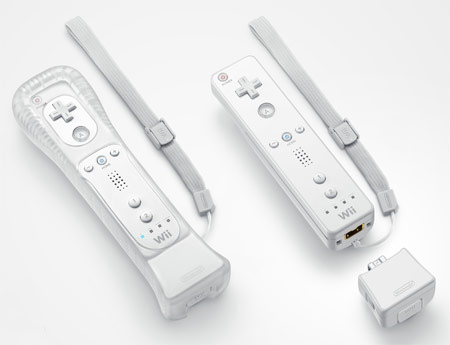
We established that the original Wiimote was kinda the worst direction they could have taken for controls initiated by human motion. Devices that are based on three-axis accelerometers can detect simple linear motion (did you know netbooks have them for detecting when they are dropped so they can park the hard disk head? I didn't!), and basic rotation when they are hold still, and both of these things they do with a high quota of errors. What that means is.. well, I'm sure almost all of you have played Wii games that couldn't even detect the simplest of gestures, let alone complex motion.
The reason they did this was simple: Production cost. I'd bet both my hands that they had prototypes with MotionPlus functionality way back in 2004 but had to decide against them. A wiimote would have cost the customer over $100, and it might have been bigger, less shock resistant, and used more power. Nintendo R&D's Junji Katamotosaid as much himself: It was not until 2008 that they were able to buy technology that they felt should have been in there from the beginning in a form that was affordable, small, and ready for mass production. They were to deliver " complex motion" via a small white magic plastic dongle you plug into your wiimote.
But before we go into the technicalities, I have a confession to make. What I initially wanted to do today was open cold and say: "Wii Motion Plus doesn't know shit about where your hands are", then go on explaining what the device can't do and why people are bound to be disappointed.
I made assumptions about the capabilities based on what we had seen so far, on what I had played so far, and what seemed to distinguish MotionPlus from - seemingly - significantly more sophisticated technology like Sony uses with their Arc.
And while a lecture on what not to expect from the device and why people are going to be disappointed is still to follow, I was very much surprised that in my investigation I found that I was kind of wrong with some of my assumptions.
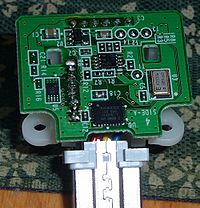
Homebrewers opened it up and had a look: There's the IDG-600 alright, plus an additional single-axis gyro by the name of " X3500W" from a japanese-based company named Toyocom. InvenSense offers single-axis gyros for the same purpose, but Nintendo decided to go with another custom-made, japanese product, probably for cost reduction. Neither the IDG- 600, nor the X3500W are listed on their respective company's product catalogue, and you can only speculate about their specifications. Huh.
Explaining in layman terms and in a few words what a MEMS (Micro-Electro-Mechanical System) gyroscope actually does is difficult, so I'll keep it short and extremely simplified.

This is what happens in the two chips found inside the Wii Motion Plus, and this is the only thing that happens there. Add to that a microchip with firmware, a Wiimote extension port extension ( :D ) and a small EEPROM for on-chip factory calibration, stir, and you have yourself a MotionPlus.
Whew. Cool. Six degrees of freedom. And yet Wii Sports Resort doesn't use them. That's right: The highly rated (and awesome, btw) game that is supposed to show the world what Nintendo's future in Motion Controls looks like does not, in fact, have any real 1:1 functionality. Neither does Tiger Woods, nor Grand Slam Tennis. Zangeki no Reginleiv doesn't, Ghost Slayer won't, and for all we know, Red Steel 2 won't, either. They all use the gyro's rotational measurements for cursor enhancement, fake 1:1 animation mapping and reliable gesture input.
Why?
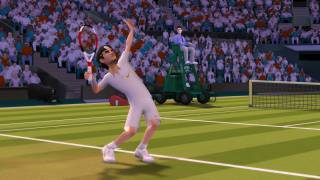
This is the only reason.
...What?

No matter how precise the measurements are, they will never be 100% accurate. Readings that are slightly different from the actual position B the device has moved to will accumulate over time to readings that are significantly different from the actual position B.
Imagine you're being blindfolded and led through an area you are familiar with by a voice telling you how many steps to go in which direction, and asking you for an estimate of your position every 10 steps. Your first few estimates will be fairly accurate, but after 1000 steps, chances are you are off by half a mile. In Motion Control terminology, this phenomenon is called drift.
"If there is even a 1% error in our estimate of the direction of gravity, it leads to a 9:8cm=s2 error in
acceleration, which can translate to over 40cm of error in position after just a few seconds."
This is a quote about the Wii Motion Plus from the "director's cut manual" of AiLive LiveMove 2, a developer's platform for Wii motion control development. 40cm (15in) of error in position after 2-3 seconds of movement. In most cases, the sensor bar cannot be used to "correct" the position, because it too does not deliver absolute data, but relative data. It can tell where the Wiimote points to, but it doesn't (or does only vaguely) know where it is, how far away it is, or how it is oriented.
Now you know why Wii Sports Resort isn't fully "1:1", and why no Wii game ever will be.
What's this, then?
This is why all of what I said above isn't as bad as it sounds. What we're looking at here are two things MotionPlus does well. The first thing is what Wii Sports Resort
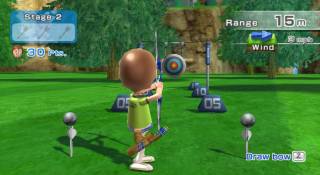
Consider Wii Sports Resort Archery: You would think that you aren't rotating the Wiimote at all, right? You're holding it out in front of you, moving it left, right, up and down. Clearly linear movement, right? Wrong! There is a miniscule amount of rotation whenever you move your arm left, right, up and down, and Motion Plus is accurate enough to read it correctly.
The second thing that Red Steel 2 does is cursor enhancement. The moment the camera in your Wiimote loses track of the sensor bar, MotionPlus takes over in estimating where you point at. This estimate is very accurate, and even if it happens to be off, it is corrected instantly the moment the sensor bar becomes visible again. In practise, this enables developers to make games that always know where you point at, all the time, be it directly at the TV or not. In Red Steel 2, this knowledge is used for your sword slashes. They are 1:1 - Whatever direction, speed, and intensity (this is where accelerometer data is used!) you cut your TV in half with is perfectly replicated into the game - even though the technology isn't able to map it perfectly to your in-game polygonal arm and sword.

Speaking of which, I have not encountered anything that excuses devs from releasing games without MotionPlus support. Games that would clearly have benefitted greatly from a cursor that doesn't spazz out the game once it loses track of the sensor bar, games with hundreds of opportunities for cool and satisfying gesture input, games that boast themselves with dozens of control options.... Since the launch of the device in June 2009, only four MotionPlus-enabled games that aren't sports games have been released, two of which are flat-outbad, comparably unknown titles that don't employ it in any meaningful way.
I'm not asking for dozens of games to require the player to buy an add-on and play with gestures, but is it too much to ask optional MotionPlus support in games that are clearly inferior because of the sensor bar and accelerometer's restrictions?
With Zangeki doing well in Japan, Motion Plus selling in the millions, Red Steel 2 reporting high pre-order numbers, several M+ Wiiware games coming out and the next Zelda requiring it for play, I will continue hoping for more games that feature what we all wanted and imagined the Wii to do from the beginning, and whose absence so quickly turned so many people into bitterness and mockery.
Finally, the old showcase video of AiLive LiveMove2, which many of you might have seen already. See how the device does 1:1 motion recognition, but only in modes where the position is reset after 2-3 seconds of motion.
And now some of you might think: "Wait, what if we used the exact same technology, but came up with some sort of system that could frequently verify the position and correct the data if necessary?"
That's an excellent idea, wouldn't you think? How could such a system look like? Here's a crazy thought: We could take the controller, and stick a huge glowing ball on top of it.
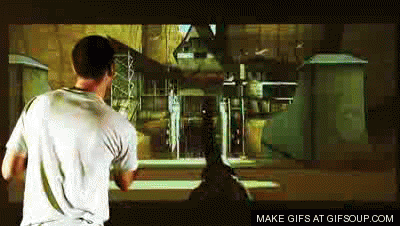

Log in to comment